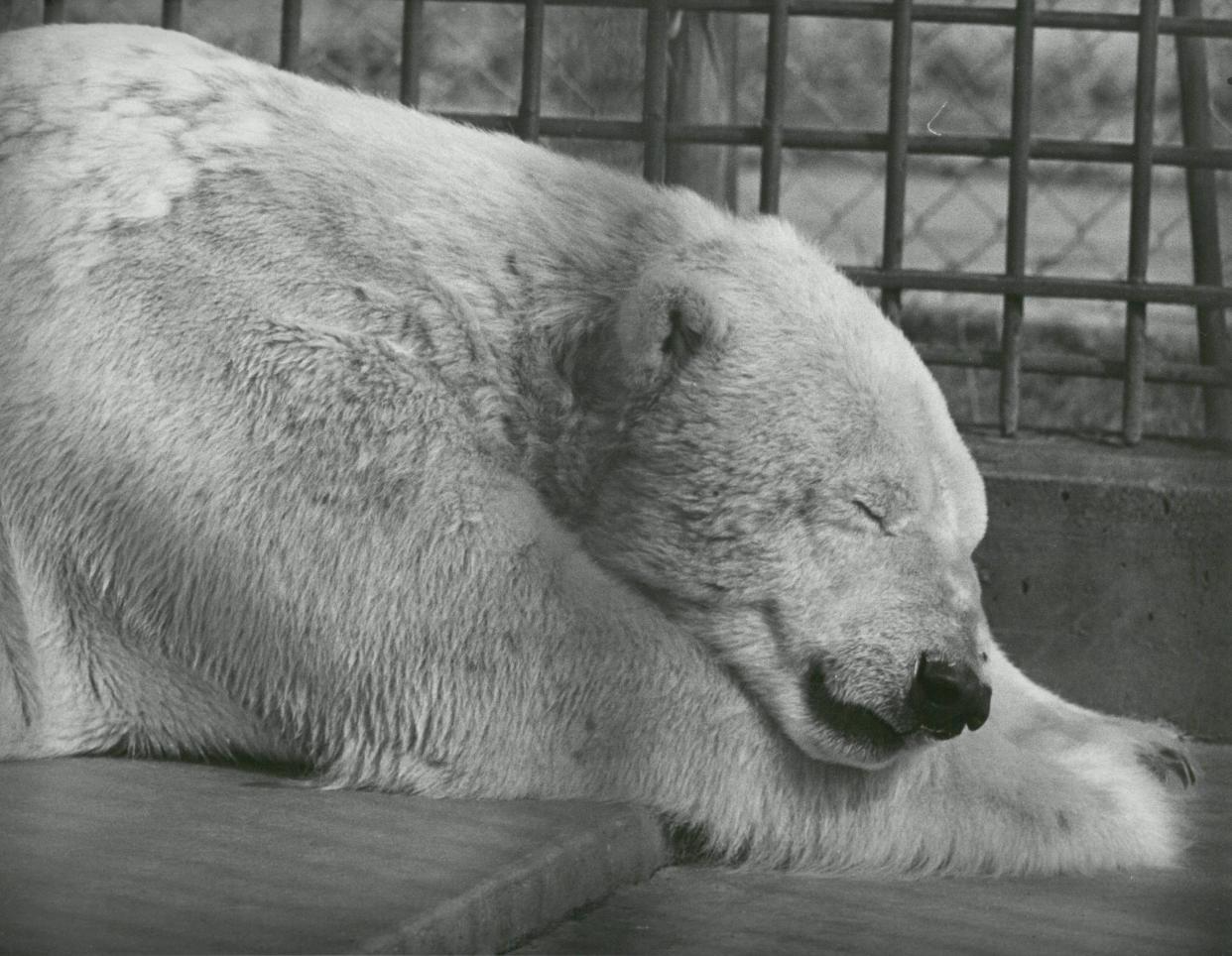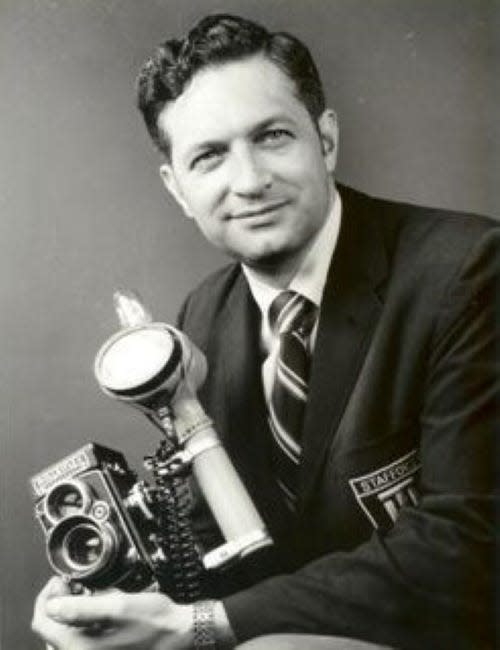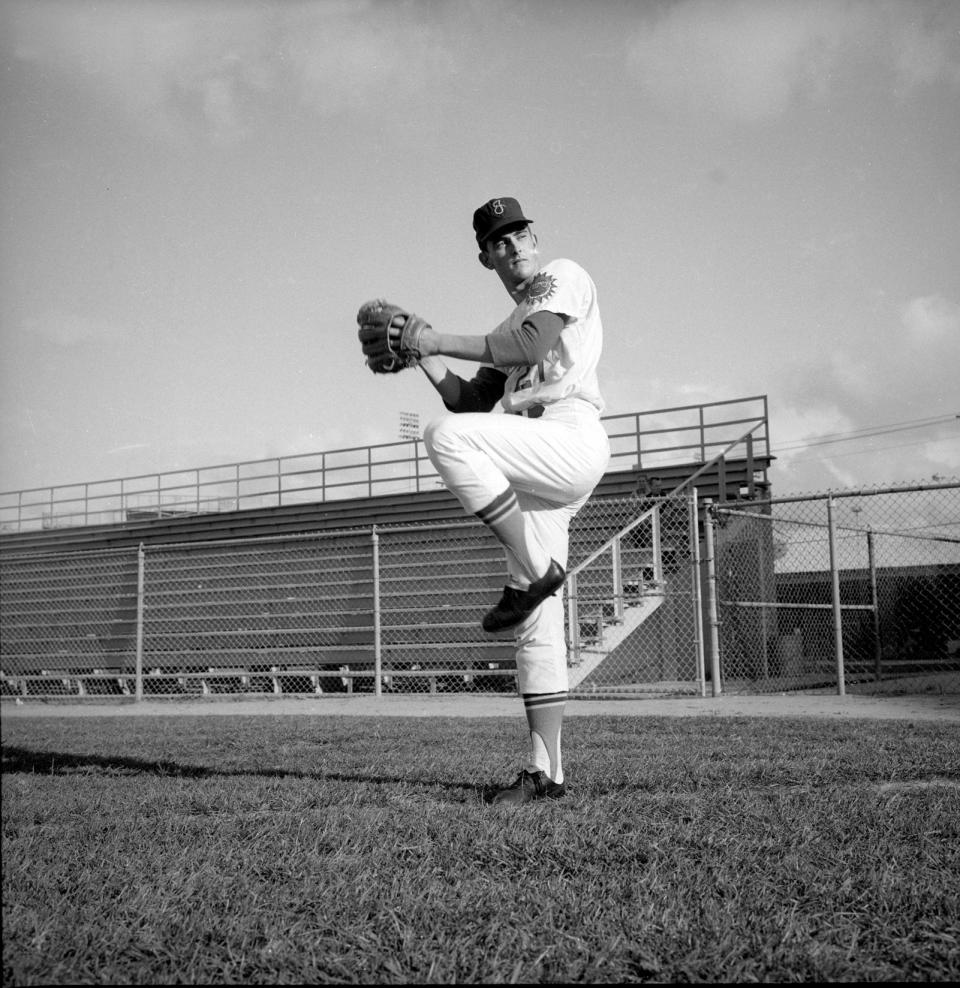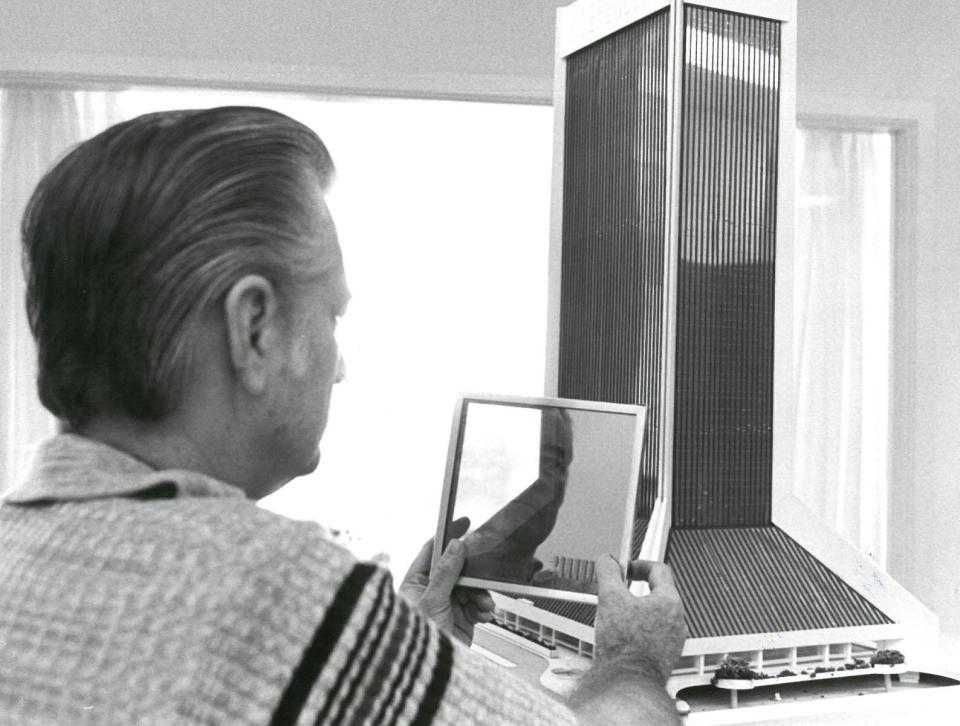Capturing a career: Press photographer Ray Stafford documented the best and worst of times

The recent demolition of the former Florida Times-Union building at 1 Riverside Ave. brought a close to how news was gathered and shared in Ray Stafford’s 35-year tenure as a T-U photojournalist from 1959 to 1994. As Stafford celebrates his 90th birthday, here are a few memorable moments from his career.
Before digital cameras and cell phones, Stafford and other Jacksonville press photographers carried 35mm Nikon cameras, lenses, film and equipment to assignments. Stafford also wore a vest he modified to carry a walkie-talkie style police/fire monitor and earplugs, to hear what was happening locally when he wasn’t in his vehicle.
He also kept a two-way company radio in his vehicle to communicate with the T-U staff.
Vintage Times-Union: Behind the lens with ace T-U photographer Grover C. Henley
Letters: DeSantis demeans public education in Florida — and its teachers
After assignments, he developed dramatic black and white or color photographs in the company darkroom. Until he had a print in hand, there was always some anticipation, wondering if he had captured the desired image. Examining the many negatives, he selected the best ones to print.
There was a darkroom technician at the T-U, but most photographers processed their own prints — unless they were called out on another assignment before they could do so.

As a photojournalist, Stafford captured the best and worst of times from 1959 until his retirement in 1994. He was always on the scene, covering the gamut of local news stories: weather, car wrecks, fires, crime scenes, arrests, court hearings, government, local events, society, the performing arts and sports. Stafford worked the night shift (3 to 11 p.m.) for 20 years.
Even when he wasn’t working, he was on call, reporting to the scene of news events occurring after midnight.
Weather assignments included natural disasters. The most memorable was Hurricane Dora in September 1964, when it hit the Jacksonville coastline. Weathering wind and rain to visually document Dora’s damaging toll, Stafford photographed the destruction of the historical Episcopal Church of Our Saviour in Mandarin. The structure was destroyed by a massive tree that fell on it during the hurricane-force winds. Harriett Beecher Stowe, famed author of “Uncle Tom’s Cabin” and her husband, Professor Calvin E. Stowe, helped organize the original church in 1880.
When fires engulfed buildings, Stafford photographed the situation as close as safety permitted, capturing flames and firefighters in action. When driving by an oil refinery at Beaver Street and Edgewood Avenue in the 1980s, Stafford noticed thick smoke coming from the area. He reported the oil fire on the company’s two-way radio. Knowing he would be asked to leave the area once the fire department and police arrived, Stafford climbed up on a Coca-Cola delivery truck parked nearby.
He stayed concealed long enough to capture a photograph of the fire and eruption of the oil storage tank, as the large metal top blew off and sailed through the air like a UFO.

There was another time Stafford spotted smoke where it shouldn’t have been. In the 1960s while passing a house in a Northside neighborhood, he saw smoke coming from the roof, beside the chimney of a house. Immediately, he went to the front door and started knocking. No one would answer or open the door. So, he asked a young boy on the sidewalk to knock on the door and not to stop, until he could call in what looked like an attic fire on his two-way radio.
The residents finally opened the door for the young boy, but they did not believe him until a fire truck arrived on the scene.
During the same decade, an armed man held family members hostage in their house in a Southside neighborhood. After negotiations with police, the man let his family exit the house. Standing beside the house with the police during the negotiation process, Stafford observed the active situation as the police and the armed man talked back and forth. One gunshot was fired inside the house.
Wayne Doolittle, 1940-2022: Jacksonville firefighter founded association, recovered memorial bell
More: Half a dozen people injured after vehicle crashes into Jacksonville Chili's restaurant
Everyone became quiet, waiting and listening. The armed man finally spoke in a deep voice, “Come on in, I’m dead,” shortly before dying of a self-inflicted wound. Some things a news photographer never forgets, even after 50 years.
In the 1970s on his way back to the T-U building after an assignment, Stafford witnessed a fatal collision involving a dump truck and a car on the expressway. Stafford went to the wrecked car to render aid. The driver looked Stafford in the eye and asked him to tell his wife that he loved her. Those were his last words. Stafford accompanied the police officer to the wife’s house to notify her of her husband’s death and to relay his final request.

Sports were also part of his beat. In 1966, Stafford photographed the newly signed Jacksonville Suns pitcher, Nolan Ryan, who chose a photograph taken by Stafford for his baseball card in 1992. Ryan went on to an impressive career on the mound, spanning four decades with the New York Mets, Los Angeles Angels, Houston Astros and Texas Rangers. Ryan retired in 1993 and was inducted to the Baseball Hall of Fame in 1999.
At Jacksonville University, basketball player Artis Gilmore was the star center, leading the Dolphins to a 27-2 record and the NCAA Division I championship game in 1970. Stafford recalls watching Gilmore practice during a photo shoot. Head basketball coach Joe Williams used a tennis racket as an extension of his arm during a practice session with the 7-foot, 2-inch Gilmore to even the height difference. Gilmore went on to play 17 seasons as a pro, first in the NBA and then the American Basketball Association.
As a photojournalist, Stafford accompanied U.S. Senator Lawton Chiles on an overnight environmental expedition in the Osceola National Forest. The Boy Scouts pitched tents for everyone to sleep in during the chilly winter expedition. Stafford opted to sleep in a sleeping bag in the covered bed of his pickup truck instead. The next morning, Stafford watched everyone exit their tents early, heading for the warmth of their cars and a cup of hot coffee.
Sen. Chiles (D-FL) introduced a bill in 1981 to end phosphate mining leases in the Osceola National Forest. Two years later, Congress passed a bill in 1984 banning phosphate mining in Osceola National Forest and President Reagan signed it.
Evening assignments varied from private social events such as debutante parties at country clubs to capturing public speeches, ballgames, theatre, ballet and symphony performances, as well as the city’s annual 4th of July firework displays above the St. Johns River and the iconic Independent Life building (now the Wells Fargo Center).

Stafford met and photographed many celebrities. Jack Benny played his violin for Stafford during a visit to Jacksonville. He met his favorite performer, Red Skelton, backstage at a downtown theatre. Other famous people Stafford met on assignment included Bob Hope, Pat Boone, Julie Nixon Eisenhower, Governor Claude Kirk, Jr. and presidential candidates visiting Jacksonville, among them George H.W. Bush.
A Navy veteran, Stafford was once stationed at Cecil Field and then Naval Air Station Jacksonville. After serving tours on the USS Midway and USS Ticonderoga aircraft carriers, photographing the Blue Angels during air shows at NAS Jax was like coming home.
Deborah (Rae) Tukua, nonfiction author and daughter of Ray Stafford
This article originally appeared on Florida Times-Union: Capturing a career: Ray Stafford documented the best, worst of times

